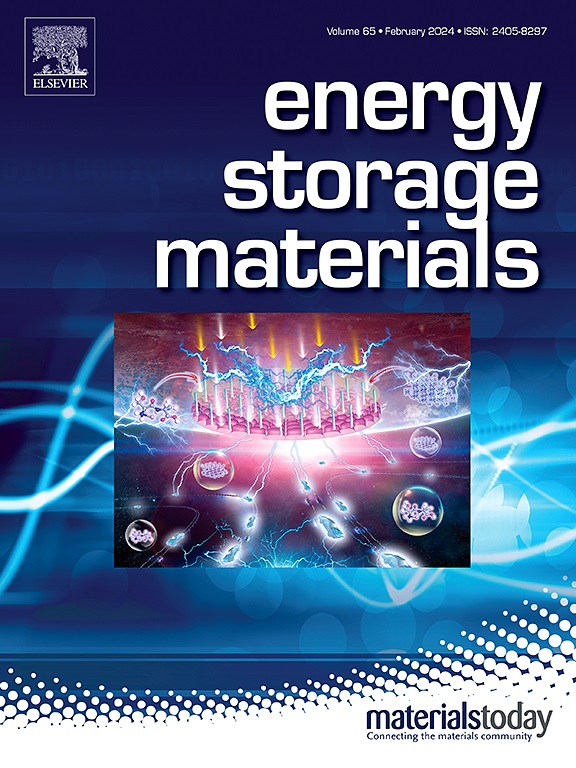Enhanced lithium polysulfide adsorption and reaction with cobalt-doped spinel additives for robust lithium-sulfur batteries
IF 18.9
1区 材料科学
Q1 CHEMISTRY, PHYSICAL
引用次数: 0
Abstract
Sulfur-based cathodes offer a promising high-energy-density alternative to conventional lithium-ion batteries. However, their commercial viability is hindered by limited stability due to the gradual loss of active sulfur during cycling. This study addresses this challenge by introducing a cobalt-doped spinel oxide as a catalytic additive, designed to enhance the performance and stability of sulfur cathodes with minimized cobalt usage. Small amounts of cobalt doping improve the adsorption of sulfur species through stronger electronic interactions with antibonding orbitals and accelerate charge transfer, thereby promoting more efficient sulfur redox reactions. Cobalt also lowers the energy barrier for Li2S formation, a critical step in the cycling process. Specifically, Co-doped MnFe2O4 with 2.4 wt % Co demonstrates a remarkable initial capacity of 1302 mAh/g at 0.1C, excellent rate capability with 700 mAh/g at 4C, and stable cycling performance with an average capacity decay of just 0.03 % per cycle at 0.5C over 200 cycles. Overall, this work underscores the potential of cobalt-doped spinel structures as catalytic additives to mitigate the limitations of sulfur cathodes, paving the way for more stable and high-performance lithium-sulfur batteries.
求助全文
约1分钟内获得全文
求助全文
来源期刊

Energy Storage Materials
Materials Science-General Materials Science
CiteScore
33.00
自引率
5.90%
发文量
652
审稿时长
27 days
期刊介绍:
Energy Storage Materials is a global interdisciplinary journal dedicated to sharing scientific and technological advancements in materials and devices for advanced energy storage and related energy conversion, such as in metal-O2 batteries. The journal features comprehensive research articles, including full papers and short communications, as well as authoritative feature articles and reviews by leading experts in the field.
Energy Storage Materials covers a wide range of topics, including the synthesis, fabrication, structure, properties, performance, and technological applications of energy storage materials. Additionally, the journal explores strategies, policies, and developments in the field of energy storage materials and devices for sustainable energy.
Published papers are selected based on their scientific and technological significance, their ability to provide valuable new knowledge, and their relevance to the international research community.
 求助内容:
求助内容: 应助结果提醒方式:
应助结果提醒方式:


